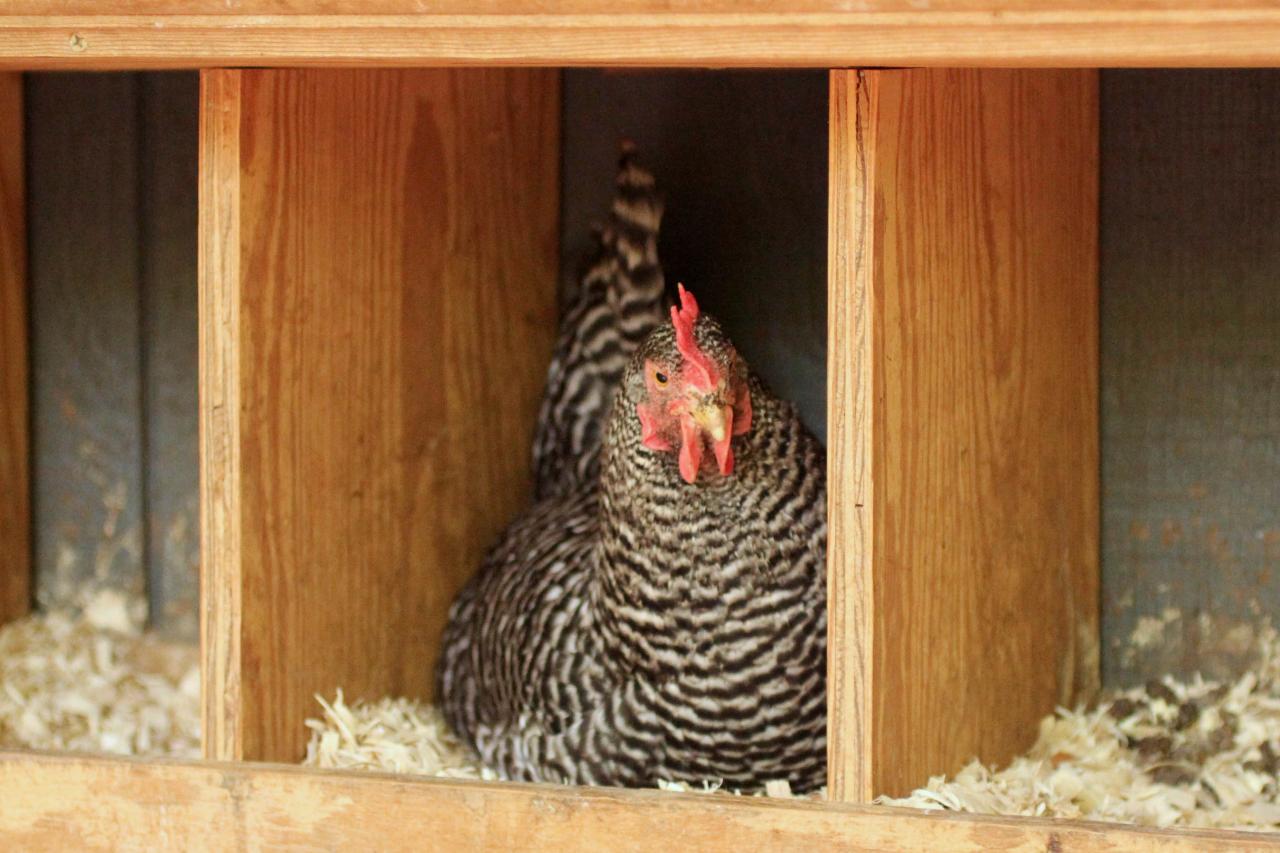In a chicken coop, there are nesting boxes set aside so that hens can lay their eggs safely and easily. These boxes are very important for the health of the hens and the eggs they lay. Hens feel safe, comfortable, and private in the right breeding boxes, which lowers their stress and encourages them to lay eggs regularly. In addition, they help keep eggs clean and safe from harm.
This piece will talk about why it’s important to use the right materials for nest boxes, how many boxes each hen should have, and the most important things you need to make the best nesting environment. By knowing these things, you can make sure that your hens have a happy and productive time laying eggs.
How Many Nest Boxes?
Making sure your hens have the right number of nest boxes is important for their comfort and for them to lay eggs. There is a general rule, but you should also watch how your group acts to make sure they are happy.
General Rule: 1 Box per 4 Hens
One nest box for every four hens is a standard rule of thumb. This keeps them from being too crowded and makes sure that each hen has enough room to lay her eggs without any problems.
Individual Considerations
Because hens act in different ways, it’s important to watch how they use the nest boxes. Hens waiting to use a box or laying eggs outside could be signs that they are stressed. To fix this, you may need to add more boxes or move them around.
Personal Example: Three Nests for Five Hens
For my five hens, three chicken nesting boxes were just right. As a general rule, you should have fewer boxes, but my hens were happy and laid more eggs when they had a little more room. This made sure that every hen had enough space to not feel rushed or crowded.
Encouraging Harmony by Providing Similar-Sized Boxes
Make sure all of the nest boxes are the same size so your hens are happy. Thus, every hen is content, and no one box gets too crowded, which could lead to stress. You can make an egg-laying area that is peaceful and productive by keeping an eye on your group and making small changes.
Materials for Nest Boxes
It’s important to use the right materials for nest boxes so that your hens have a nice place to live. You don’t have to follow strict rules, but knowing what you need can help you choose.
No Strict Rules: Variety of Options
Nest boxes can be made from a lot of different things. Metal, wood, buckets, plastic bins, and even artistic items like baskets or old toilets are common choices. What you pick will depend on what you have, how much money you have, and what your hens need.
Essential Requirements for Every Nest
1. Adequate Size and Sturdiness
Every nest box should be the right size and strong, no matter what it’s made of. It needs to be big enough for hens to lay eggs on and strong enough to be used every day. A well-built nest box keeps birds from getting too crowded and hurt.
2. Coziness and Appeal for Hens
Hens should also like the nest box and think it looks nice. Putting down soft stuff like straw or wood shavings makes the nest look tempting. Hens like to lay their eggs in safe, private places, so make sure the nest box meets these needs to get them to use it often.
You can make nest boxes that keep your hens happy and productive if you pay attention to these important points and choose the right materials.
Creating the Perfect Nesting Environment
Nesting boxes are important for your hens’ comfort and productivity. They give hens a safe, clean, and comfortable place to lay their eggs, which lowers their stress and makes the eggs better. For your nesting boxes, it’s important to pick the right materials and make sure they’re big enough and strong enough to last every day.
Watching your flock’s habits and preferences can also help you make the changes you need to make the setting more peaceful. By paying attention to these things, you can keep your hens happy and active, which will lead to a successful flock.
Stay in touch for more updates and alerts visit: Hint Insider!




